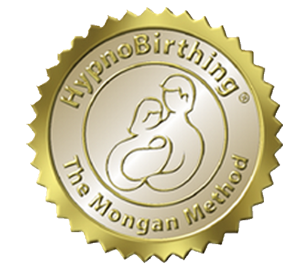
California’s SB 848: Empowering Women After Reproductive Loss
25
January 2024
The Hidden Grief of Reproductive Loss
Reproductive loss, a subject often enshrouded in stigma, impacts up to 20% of known pregnancies, with actual figures potentially higher. Many women suffer early miscarriages before pregnancy confirmation. This startling statistic unveils a world of concealed sorrow where feelings of anxiety and depression prevail. Beyond miscarriages, stillbirths, and unsuccessful fertility treatments are losses. These profound losses have historically lacked societal recognition and support. Senate Bill 848 marks a pivotal shift in this narrative, offering much-needed acknowledgment and support through its leave provisions.
The Evolution of Perinatal Loss Awareness
Historically, perinatal loss, particularly in cases like early miscarriages or failed fertility treatments, was often overlooked and unacknowledged. This societal oversight compounded the grief and isolation felt by those experiencing such losses. For instance, in my hypnobirthing classes, I’ve witnessed couples grappling silently with their grief. Often, the clue they leave of loss is withdrawing into isolation due to feelings of shame and self-blame. Senate Bill 848 challenges historically indifferent attitudes by encouraging women to use leave for self-care and support.
Healing Through Time and Support After Reproductive Loss
SB 848 recognizes the fundamental need for time and space to heal after reproductive loss. The law validates these experiences by granting designated leave. This fosters an environment conducive to open dialogue and reducing societal stigma for perinatal loss.
Creating a Compassionate Workplace
A crucial aspect of SB 848 is its protection against discrimination or retaliation for employees availing reproductive loss leave. This fosters a supportive workplace environment, ensuring women can take the necessary time for healing without career-related fears. While the provision of five days may not be sufficient for all, it establishes an essential precedent for recognizing the impact of reproductive loss.
California Leading Reproductive Health Initiatives
With SB 848, California positions itself at the forefront of addressing and recognizing the challenges faced by women following reproductive loss. Most importantly, this policy is more than legislation; it symbolizes solidarity and understanding in reproductive healthcare, normalizing and validating pregnancy loss as a significant life event. Prior to the 1970’s women suffering perinatal loss were sent home to grapple with their grief alone. Providing women with support after loss is being recognized as important to their overall recovery and mental health.
Empowering Women and Families After Perinatal Loss
This groundbreaking legislation empowers women and families to take the time they need to process and heal from reproductive loss; it acknowledges the unique and often underrepresented challenges they face, offering a framework for support and understanding. I dream of a nation that supports women’s reproductive rights. California is setting a precedent for other states to follow, leading the way in changing how reproductive loss is approached and supported.
The Role of Bereavement Doulas
Legislation like SB 848 lays the groundwork for support, but the healing journey often necessitates a more personal approach, exemplified by the role of bereavement doulas. These professionals specialize in providing emotional, physical, and informational support during miscarriages, stillbirths, neonatal deaths, or other forms of baby loss. They offer a compassionate presence during these challenging times.
- Emotional Support
Bereavement doulas provide a safe space for parents to express their grief and emotions, validating their feelings and assisting in processing the loss meaningfully. - Physical Support
They also offer guidance on medical procedures and physical recovery after loss, providing comfort and reassurance. - Informational Support
Bereavement doulas are critical in helping families navigate medical and legal processes associated with reproductive loss, connecting them with resources like counseling services or support groups.
Partner Support and Community Connection
Bereavement doulas also focus on the often-overlooked grief of partners, offering them a space for expression and emotional support. They connect grieving parents with a community of others who have experienced similar losses, fostering a shared sense of healing and understanding.
Educating and Advocating Through Reproductive Loss
Beyond direct family support, bereavement doulas educate healthcare providers and communities about the needs of families experiencing reproductive loss. They advocate for compassionate care and raise awareness about the profound impact of these losses.
Senate Bill 848 and the role of bereavement doulas together create a holistic support system for individuals and families experiencing reproductive loss. This legislation, coupled with the empathetic care of bereavement doulas, honors and facilitates the healing process, highlighting the importance of compassion, understanding, and comprehensive support in reproductive health care. Many resources are available in Placer County to assist you with your grief processing. Placer Birth Connection offers a resource page of professionals to support you in healing or call our office to get connected.



Recent Comments